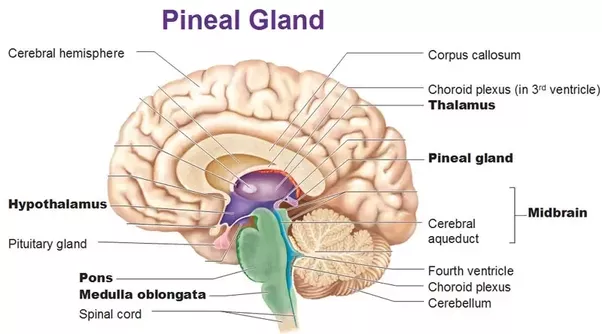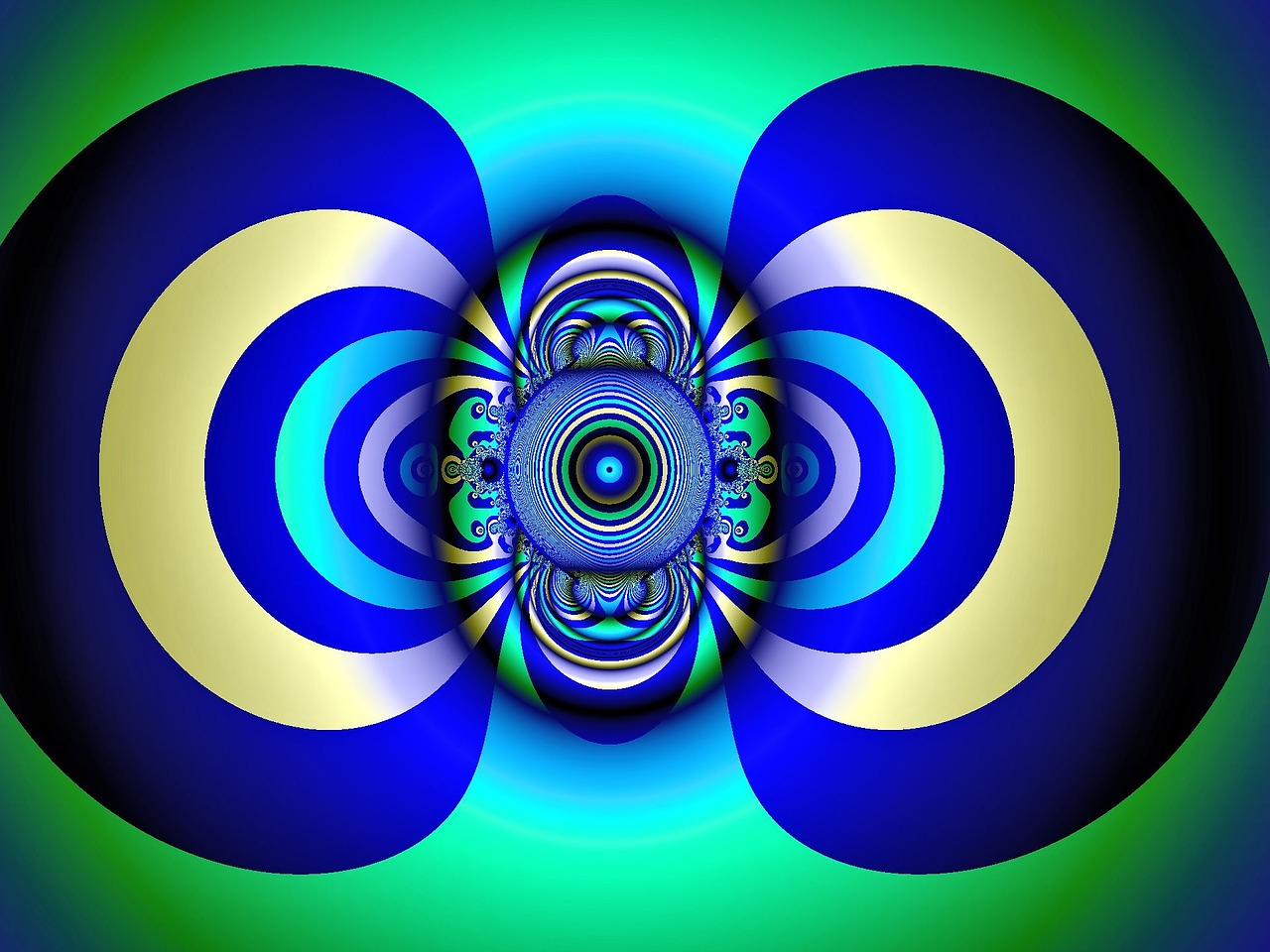Exercising Your Third Eye
Your third eye is your sixth chakra and also the doorway for your clairvoyance and psychic sensing. Your third eye allows you to see auras, spirits, and angels. It also allows you to connect with your spirit guides and receive visions and psychic symbols. Continue reading to discover how to exercise your third eye like a muscle today.
What is Your Third Eye?

Your third eye is also known as your psychic eye or mind’s eye. It is connected to your pineal gland. According to Descartes in the 1600s, your pineal gland is the principal seat of the soul. Your pineal gland is located just below the skin above your nose and between your eyebrows. Your pineal gland creates melatonin and it is at your mind’s eye where you see colours, visions, and psychic images.
Opening Your Third Eye
In these third eye exercises, you might feel a tingling sensation in your third eye, your pineal gland, area. That indicates that your third eye is opening up and your clairvoyance is expanding.

Place your index finger on your third eye and imagine it activating. This may appear like an iris of an eye or a flower with the petals unfurling slowly to reveal the light beyond. While imagining your third eye chakra opening, move your finger lightly in a circular motion on your forehead. As you do this you may feel more and more light and warmth enter your aura and third eye.
Third Eye Breathing
It is mission-critical to check in with your breath throughout the day. Breathing correctly is important energy work. You may notice a bad habit of breathing shallowly and only using the top third of your lungs. Breathing deeply is essential for the correct oxygenation of your body. Deep breathing also increases vitality and maintains the health of your chakras including your third eye.
Breathe deeply and slowly through your nose with your belly expanding outwards like a balloon. Inhale for a count of 4, hold for a count of 4, and exhale for a count of 4. With your eyes still closed, gently bring your index finger and thumb to your third eye, and look up at your third eye.

If you feel more adventurous you may want to try out dragon breathing, also known as holotropic breathing. This is very deep and very rapid breathing that you do through your nose. Dragon breathing floods your body with oxygen and more blood flows more to your brain. Visualise the point of bright light in your third eye as you do this. Start with 5 minutes and extend the duration to an hour or longer as your practice.
Meditation & Visualisation
Close your eyes and breathe deeply for a few moments until you begin to feel relaxed. Now, imagine a deep blue or purple ball of energy hovering over your forehead and between your eyebrows. Hold this image in your mind’s eye for a few moments. Breathe deep and even for a few minutes to relax your mind and body. When you are ready, imagine the number 1 in your mind’s eye for a few seconds. Then imagine the number 2 and continue on with your focus until you reach the number 10. Then repeat with imagining other things like letters, flowers, or symbols. These all have the same effect in opening up your third eye.

There are many meditations that sharpen your third eye. Sit still and breathe deeply a few times. Then focus on a virtuous feeling like unconditional love and maintain this focus continuously for longer periods of time. Or you may see white and coloured lights hitting your third eye from above, below, and all directions. They are the different rays and streams of light from the angels, ascended masters, and source energy.
Crystals
There are many ways to activate and exercise your chakras with crystals. Begin by using a small amethyst crystal placed comfortably on your forehead. Then lie down and meditate with the amethyst on your third eye. Do this for 10 or 15 minutes. You can repeat this exercise with different crystals and for different chakras too. You will feel a warm tingly sensation and be able to distinguish the energies of different crystals.

Lie or sit down and hold a crystal. Any will do but you may want to start with quartz or any common crystal to hand. Tune into it. Feel its vibrations and hear its sounds. Does your crystal have a name? Ask your crystal to reveal a symbol, speak to a guide, or take you to another world. You are psychically communicating with your crystal with your third eye. If you receive nothing, try another crystal and meditate with that crystal. Try this out each day for a few weeks.
Yoga & Qigong
Yoga keeps your body’s energy centres clean, clear, and working at top performance. Kundalini yoga is particularly tailored towards working with subtle energies and chakras. Also, some of the top yoga postures will help you open your third eye. These poses include Downward-Facing Dog, Child’s Pose, Standing Half Forward Bend, Supported Shoulder-stand, and Hero pose.

If you have a daily practice then add some third eye exercises to activate and expand it further. If you don’t meditate or do yoga or qigong on a daily basis then begin now. There are many videos and websites available to get started online. Your body will love the flow, movement, and stretching and your third eye will also flow, move, and stretch as you exercise it with qigong, Tai Chi, and yoga.
Psychic Development
Training your third eye like a muscle is important for your psychic development. There are many easy, fun, and effective ways to do this. Allow yourself to experiment. Have fun trying different techniques or combinations of them.

Let go of life and meditate whilst listening to music. Then get up and sing and dance with the music. Let the music guide you and welcome any visions and guidance you receive. Also, seeing auras is a visual experience, and learning to see them is a cool way to open your third eye.
Feel the power and magic of the universe expand your third eye with Infinity. As an Infinity member, you receive many life-changing tools including the meditation library and light code activations. You also get free access to live interactive workshops, massive discounts on online workshops, and access to daily immunity, health, and frequency support.
Go here to join infinity.
Healing For Horses Enquiry Form
"*" indicates required fields
Sign up for our weekly newsletter, for inspiration and fresh content from Jerry Sargeant.
Event Enquiry Form
"*" indicates required fields
Sign up for our weekly newsletter, for inspiration and fresh content from Jerry Sargeant.
[mc4wp_form id=”168″]
Download Prospectus Form
[contact-form-7 id=”50219″ title=”Download Propesctus Form”]
Download Prospectus Form
[contact-form-7 id=”50219″ title=”Download Propesctus Form”]
Star Magic
Accessibility Statement
- sminfozzle.testingweblink.com
- December 15, 2025
Compliance status
We firmly believe that the internet should be available and accessible to anyone, and are committed to providing a website that is accessible to the widest possible audience, regardless of circumstance and ability.
To fulfill this, we aim to adhere as strictly as possible to the World Wide Web Consortium’s (W3C) Web Content Accessibility Guidelines 2.1 (WCAG 2.1) at the AA level. These guidelines explain how to make web content accessible to people with a wide array of disabilities. Complying with those guidelines helps us ensure that the website is accessible to all people: blind people, people with motor impairments, visual impairment, cognitive disabilities, and more.
This website utilizes various technologies that are meant to make it as accessible as possible at all times. We utilize an accessibility interface that allows persons with specific disabilities to adjust the website’s UI (user interface) and design it to their personal needs.
Additionally, the website utilizes an AI-based application that runs in the background and optimizes its accessibility level constantly. This application remediates the website’s HTML, adapts Its functionality and behavior for screen-readers used by the blind users, and for keyboard functions used by individuals with motor impairments.
If you’ve found a malfunction or have ideas for improvement, we’ll be happy to hear from you. You can reach out to the website’s operators by using the following email
Screen-reader and keyboard navigation
Our website implements the ARIA attributes (Accessible Rich Internet Applications) technique, alongside various different behavioral changes, to ensure blind users visiting with screen-readers are able to read, comprehend, and enjoy the website’s functions. As soon as a user with a screen-reader enters your site, they immediately receive a prompt to enter the Screen-Reader Profile so they can browse and operate your site effectively. Here’s how our website covers some of the most important screen-reader requirements, alongside console screenshots of code examples:
-
Screen-reader optimization: we run a background process that learns the website’s components from top to bottom, to ensure ongoing compliance even when updating the website. In this process, we provide screen-readers with meaningful data using the ARIA set of attributes. For example, we provide accurate form labels; descriptions for actionable icons (social media icons, search icons, cart icons, etc.); validation guidance for form inputs; element roles such as buttons, menus, modal dialogues (popups), and others. Additionally, the background process scans all the website’s images and provides an accurate and meaningful image-object-recognition-based description as an ALT (alternate text) tag for images that are not described. It will also extract texts that are embedded within the image, using an OCR (optical character recognition) technology. To turn on screen-reader adjustments at any time, users need only to press the Alt+1 keyboard combination. Screen-reader users also get automatic announcements to turn the Screen-reader mode on as soon as they enter the website.
These adjustments are compatible with all popular screen readers, including JAWS and NVDA.
-
Keyboard navigation optimization: The background process also adjusts the website’s HTML, and adds various behaviors using JavaScript code to make the website operable by the keyboard. This includes the ability to navigate the website using the Tab and Shift+Tab keys, operate dropdowns with the arrow keys, close them with Esc, trigger buttons and links using the Enter key, navigate between radio and checkbox elements using the arrow keys, and fill them in with the Spacebar or Enter key.Additionally, keyboard users will find quick-navigation and content-skip menus, available at any time by clicking Alt+1, or as the first elements of the site while navigating with the keyboard. The background process also handles triggered popups by moving the keyboard focus towards them as soon as they appear, and not allow the focus drift outside it.
Users can also use shortcuts such as “M” (menus), “H” (headings), “F” (forms), “B” (buttons), and “G” (graphics) to jump to specific elements.
Disability profiles supported in our website
- Epilepsy Safe Mode: this profile enables people with epilepsy to use the website safely by eliminating the risk of seizures that result from flashing or blinking animations and risky color combinations.
- Visually Impaired Mode: this mode adjusts the website for the convenience of users with visual impairments such as Degrading Eyesight, Tunnel Vision, Cataract, Glaucoma, and others.
- Cognitive Disability Mode: this mode provides different assistive options to help users with cognitive impairments such as Dyslexia, Autism, CVA, and others, to focus on the essential elements of the website more easily.
- ADHD Friendly Mode: this mode helps users with ADHD and Neurodevelopmental disorders to read, browse, and focus on the main website elements more easily while significantly reducing distractions.
- Blindness Mode: this mode configures the website to be compatible with screen-readers such as JAWS, NVDA, VoiceOver, and TalkBack. A screen-reader is software for blind users that is installed on a computer and smartphone, and websites must be compatible with it.
- Keyboard Navigation Profile (Motor-Impaired): this profile enables motor-impaired persons to operate the website using the keyboard Tab, Shift+Tab, and the Enter keys. Users can also use shortcuts such as “M” (menus), “H” (headings), “F” (forms), “B” (buttons), and “G” (graphics) to jump to specific elements.
Additional UI, design, and readability adjustments
- Font adjustments – users, can increase and decrease its size, change its family (type), adjust the spacing, alignment, line height, and more.
- Color adjustments – users can select various color contrast profiles such as light, dark, inverted, and monochrome. Additionally, users can swap color schemes of titles, texts, and backgrounds, with over seven different coloring options.
- Animations – person with epilepsy can stop all running animations with the click of a button. Animations controlled by the interface include videos, GIFs, and CSS flashing transitions.
- Content highlighting – users can choose to emphasize important elements such as links and titles. They can also choose to highlight focused or hovered elements only.
- Audio muting – users with hearing devices may experience headaches or other issues due to automatic audio playing. This option lets users mute the entire website instantly.
- Cognitive disorders – we utilize a search engine that is linked to Wikipedia and Wiktionary, allowing people with cognitive disorders to decipher meanings of phrases, initials, slang, and others.
- Additional functions – we provide users the option to change cursor color and size, use a printing mode, enable a virtual keyboard, and many other functions.
Browser and assistive technology compatibility
We aim to support the widest array of browsers and assistive technologies as possible, so our users can choose the best fitting tools for them, with as few limitations as possible. Therefore, we have worked very hard to be able to support all major systems that comprise over 95% of the user market share including Google Chrome, Mozilla Firefox, Apple Safari, Opera and Microsoft Edge, JAWS and NVDA (screen readers).
Notes, comments, and feedback
Despite our very best efforts to allow anybody to adjust the website to their needs. There may still be pages or sections that are not fully accessible, are in the process of becoming accessible, or are lacking an adequate technological solution to make them accessible. Still, we are continually improving our accessibility, adding, updating and improving its options and features, and developing and adopting new technologies. All this is meant to reach the optimal level of accessibility, following technological advancements. For any assistance, please reach out to


